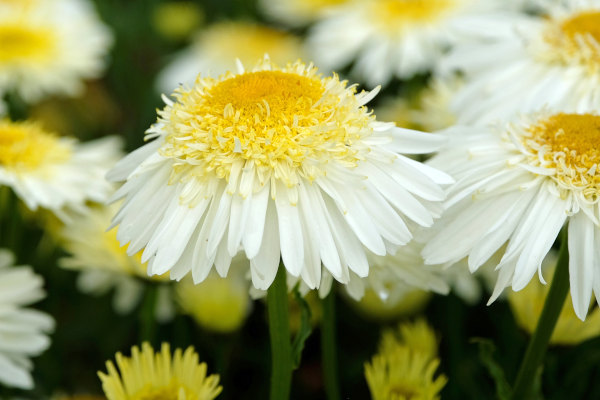How to grow Leucanthemum
This member of the daisy family contains over 30 species of annuals and perennials found growing in moist meadows, grassland, and wasteland throughout Europe and temperate Asia. It includes the UK native Leucanthemum vulgare (ox eye daisy), and popular hybrid Leucanthemum x superbum (Shasta daisy) named after the Californian volcano Mount Shasta near to which it was bred in the 1800s.
Leucanthemum is valued for its summer-long display of cheery, daisy-like flowers on strong, upright stems. These tend to be white with yellow centres, though cream and yellow cultivars are available. Flowers can be single, semi-double, or double.
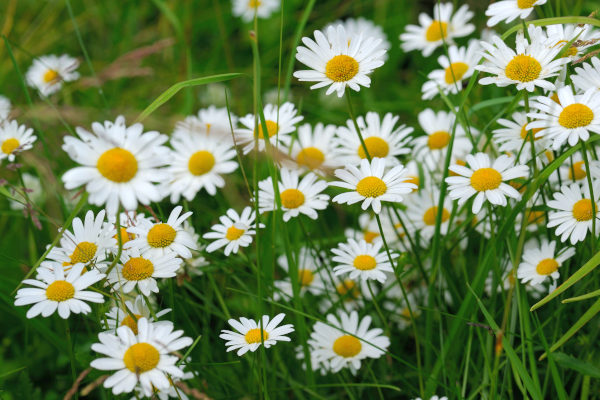
Zantedeschia is a genus of flowering plants from the family Araceae and is native to southern Africa. With a rich history dating back to the Ancient Romans, these deciduous or semi-evergreen perennials have been used as a symbol of celebration. Zantedeschia was Named after Professor Giovanni Zantedeschia, an Italian botanist.
There are two main forms of Zantedeschia: hardy and tender. Hardy forms of the plant can be grown outdoors, enjoy moist soil and full sun or partially shaded conditions - these are known as Arum lilies. Tender forms of Zantedeschia prefer being grown in containers or pots and should be brought inside over the winter - these are known as Calla lilies.
With tuberous flora in all colours from whites, yellows and oranges to deep reds and purples, Zantedeschias are not to be overlooked in any garden, as long as they have sufficient sunlight to grow in.
Ready to learn more about growing Zantedeschia? Read on for all there is to know...

Key Information
Soil pH
Position
Hardiness

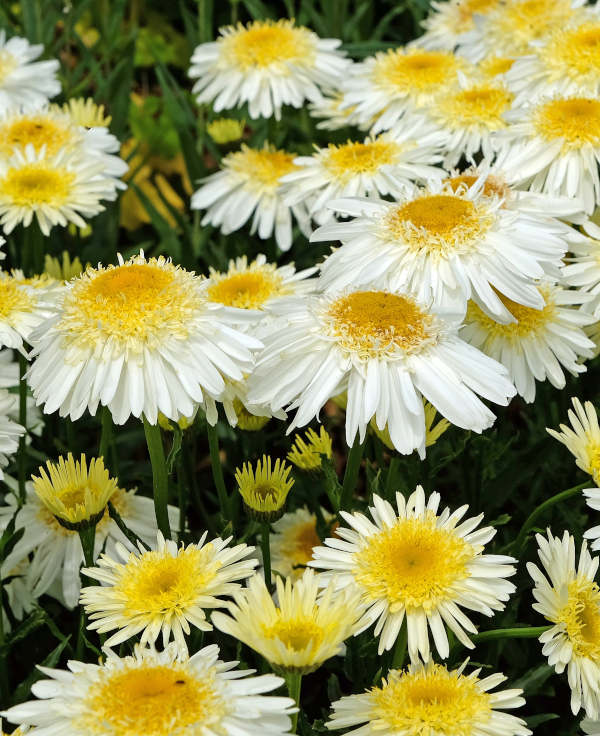
Where & when to plant Leucanthemum
Position- Flowers best in full sun, though will tolerate light shade
Soil- Moist and well-drained
Flowering Period- Summer
Hardiness- Hardy
For best results, plant in autumn or spring. An autumn planting can be done by those gardening in mild conditions (and broadly speaking, this is the southern half of the UK). For those liable to very cold winters, it is best to wait until spring (generally the northern half of the UK). Planting can also be carried out in summer, though be prepared to water regularly.
Ox eye daisy is ideal for wildflower planting. Known as a ‘pioneer species’, it thrives in newly disturbed ground and flourishes quickly while other wildflowers take time to establish. As such, it is often one of the main features of a newly sown meadow, naturally scaling back after a few years as other plants take hold.
With their more unusual flower-forms and range of colours, Shasta daisies offer a cultivated, ornamental take on their wildflower relative and are perfect for herbaceous borders and container displays.
All leucanthemum tend to be strong, vigorous growers, and should thrive easily given a sunny, well-draining spot. Avoid soil prone to winter waterlogging.
How to plant Leucanthemum
In the ground
- Clear the chosen area of weeds.
- Dig a planting hole several times larger than the root ball.
- Place the plant in the hole, ensuring the top of the root ball sits level with the surface of the soil. Too low and the plant may rot, too high and the roots can dry out.
- Backfill with soil and firm in gently.
- Soak well with water.
- Mulch with well-rotted organic matter.
In a container
- Choose an appropriate container, ensuring there are plenty of drainage holes in the bottom.
- It can be a good idea to fill and plant large containers in situ to save yourself the trouble of moving once full.
- Use a good quality potting compost with plenty of horticultural grit mixed in, and, if not already present in the compost (check the description on the bag) some slow-release fertiliser granules.
- Start by partially filling the pot with compost; enough so that when placed on it the upper surface of the root ball is about 3cm lower than the top of the pot.
- Infill all the space surrounding the root ball with compost, firming down with your fingers then adding a little more so the plant is held tight.
- Pick up the pot (if you can!) and lightly tap on the ground a few times to help further settle the compost around the plant.
- Soak well with water.
- A mulch with horticultural grit will look attractive and help to prevent a ‘cap’ or crust forming on the top of the compost (something container plants can suffer due to the artificial nature of their watering).

What to plant with Leucanthemum
To achieve a natural-looking perennial wildflower meadow, combine ox eye daisy with companions such as achillea, centaurea, scabious, lychnis, Primula veris, silene, filipendula, and Geranium pratense. Keep the nutrient levels of the soil low by removing clippings when you mow (in early spring and again in autumn). Sowing the parasitic plant yellow rattle (Rhinanthus minor) will help to weaken the grass, giving wildflowers greater opportunity to establish.
When using Shasta daisies in a border, you cannot go wrong with dependable cottage garden classics such as phlox, delphinium, nepeta, salvia, penstemon and dahlias – the list goes on! These obliging plants mix easily with just about anything you care to grow in your garden.
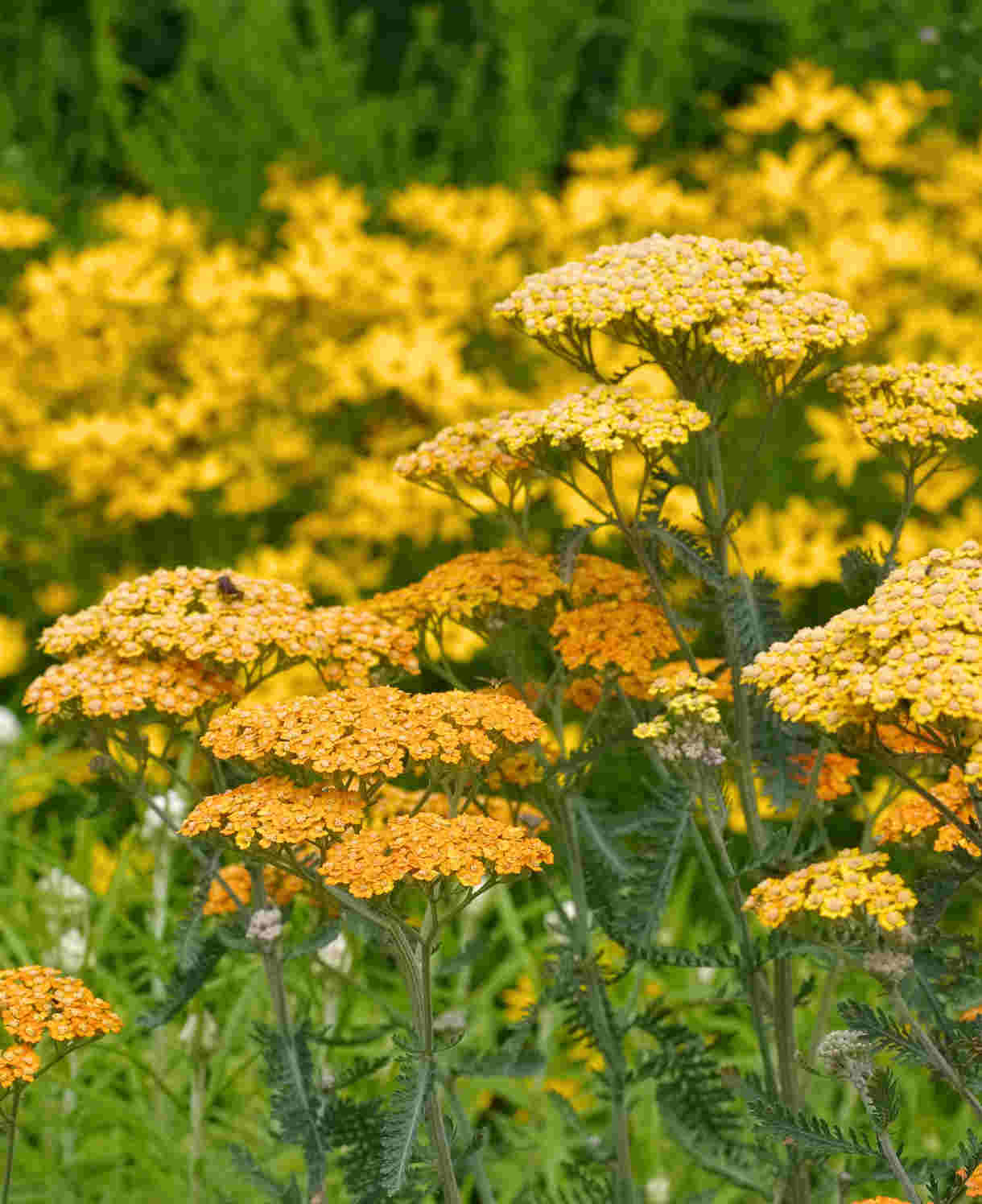
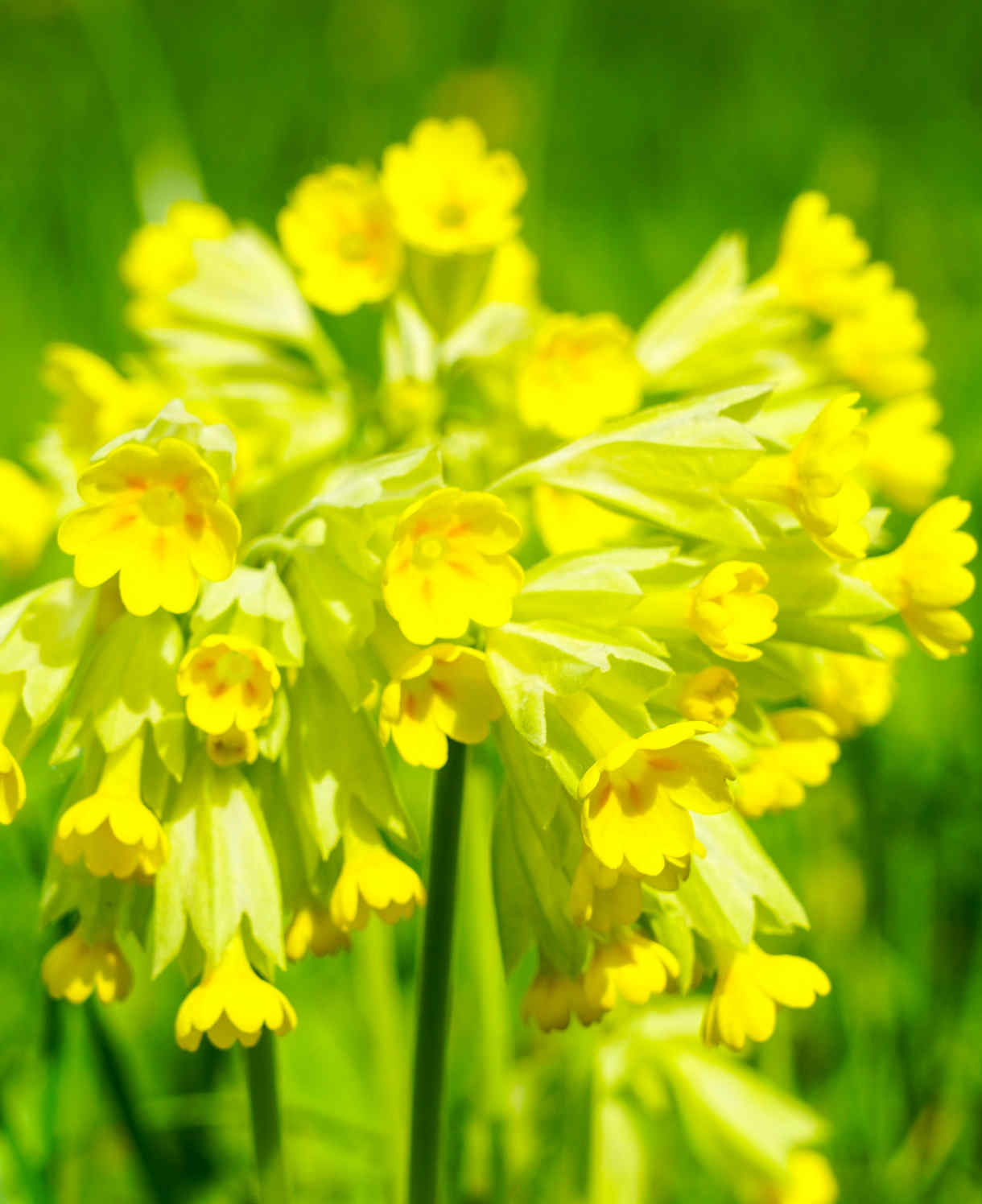
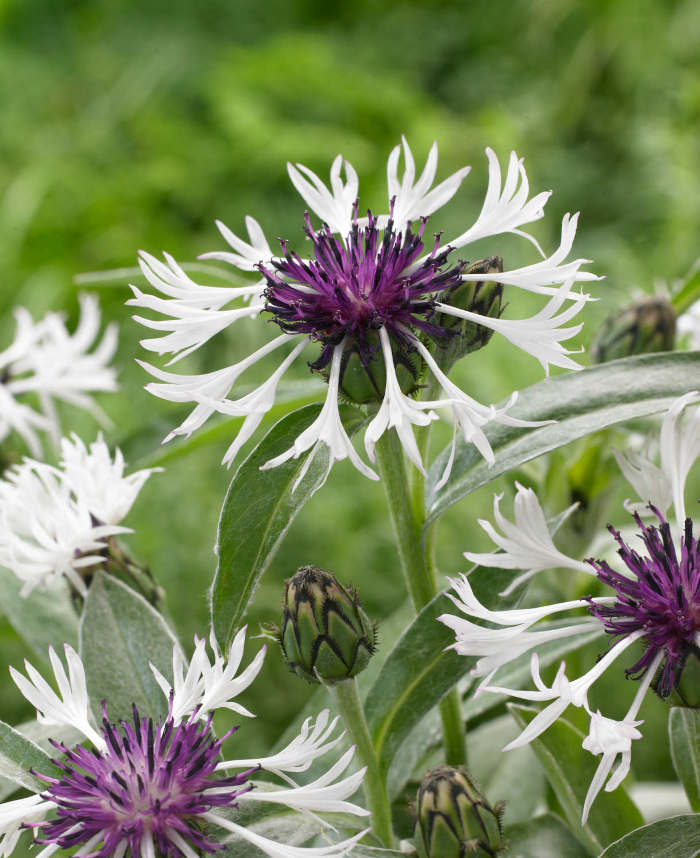
How to care for Leucanthemum
Pruning and Deadheading
Deadhead throughout the growing season to encourage further flowering. Individual stems will not flower more than once, so cut them down to the ground when finished.
Cut the whole plant back in late autumn/ winter.
Watering
Water until established, after which this drought tolerant plant is relatively self-sufficient.
Container-grown leucanthemum can be thirsty and will require regular watering. Allow the top few centimetres of compost to dry out between soakings.
Cold Protection
All the leucanthemum offered by Hayloft are hardy and able to overwinter outside without the need for additional protection.
Pests and Diseases
Leucanthemum can be susceptible to attack from aphids, slugs, earwigs, and chrysanthemum eelworm.
As always, we recommend pests be viewed as part of the garden ecosystem and tolerated wherever possible. Adopting certain gardening practices can minimise the risk of problems, such as encouraging natural predators (birds, frogs, hedgehogs etc) into the garden, growing plants in the right conditions according to their needs, and maintaining good garden hygiene.
How to propagate Leucanthemum
Leucanthemum is best propagated by division, done every three or so years in either autumn or spring. As well as providing new plants, this also maintains the health and vigour of existing specimens.
- Choose a day when the soil is not frozen or waterlogged.
- Dig the plant out of the ground.
- Shake off any excess soil.
- Separate the plant into sections using either swift, cutting blows with a sharp spade, or two forks inserted back-to-back with tines touching, handles then pushed together to prise the plant apart.
- Discard old, damaged, or surplus pieces, keeping healthy, vigorous material.
- Replant selected pieces where desired.
- Water well until fully established.
Common Leucanthemum questions
Is leucanthemum a perennial?
Leucanthemum can be small and annual, or taller and perennial. All those offered by Hayloft are of the perennial variety.
Is leucanthemum hardy?
The extent of this hardiness can vary (check individual descriptions for details), though all should survive outside in the average UK winter.
How tall does leucanthemum grow?
The height of leucanthemum can vary, with those offered by Hayloft ranging from 30cm to 90cm.
Do you deadhead leucanthemum?
Ox eye daisies in wildflower planting tend to be left alone in this respect, as to access them for deadheading would usually mean trampling over other wildflowers.
Shasta daisies are more likely to be kept deadheaded as they are usually grown in more accessible spots inviting closer inspection. See ‘Pruning and Deadheading’ section above for detailed instructions. Deadheading is not essential, though will maintain a neat appearance and encourage increased blooming.
